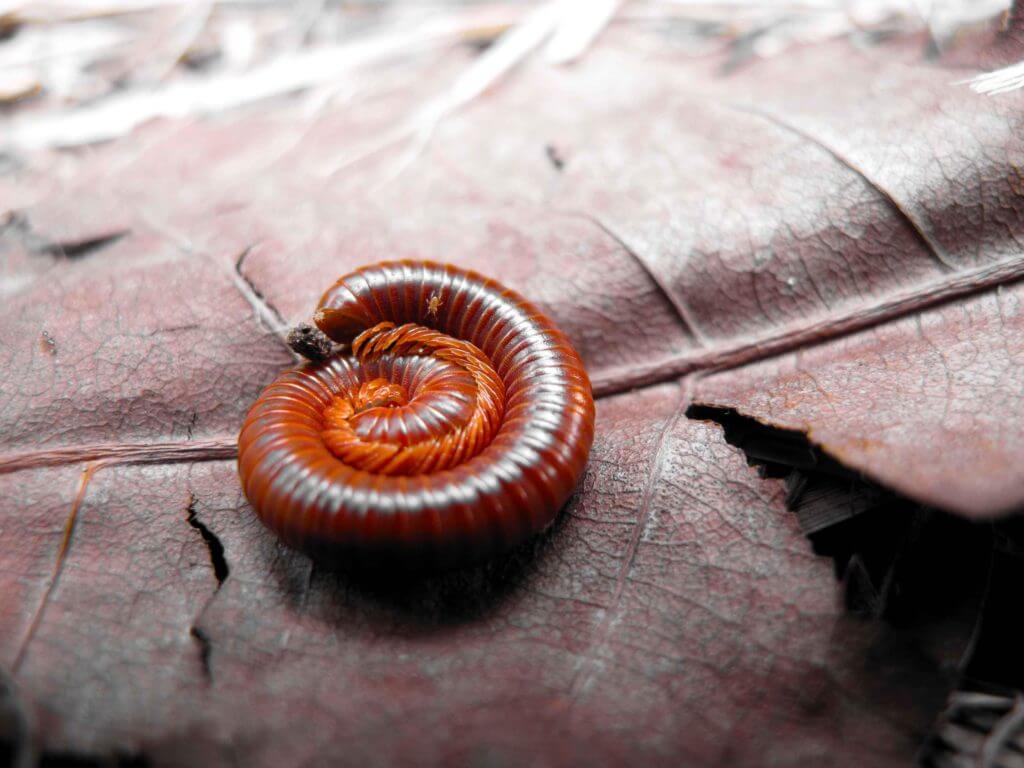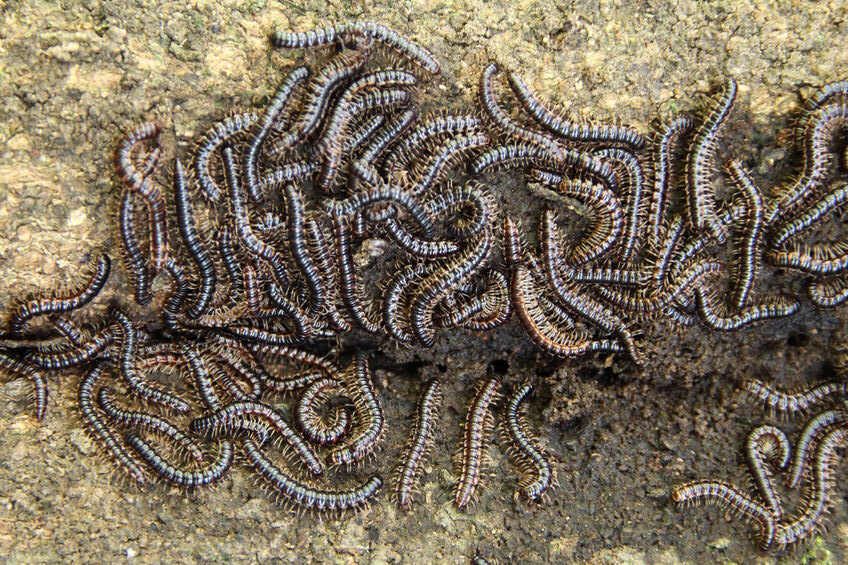Table Of Content

They’re important decomposers that need moisture and decomposing plant matter to thrive, so are often noticed in gardens or under old mulch in the landscape. You can prevent millipedes by keeping the area outside your home neat and free of decaying matter. Fix any leaks in your home and use a dehumidifier to dry out damp places. Pesticides can be used outside your house around the foundation. This will stop many of the millipedes from coming in but not all of them. Remember, pesticides are poisonous and should be handled carefully according to manufacturer instructions.
Tightly spiraled worms? You've got millipedes! - Alexandria Echo Press News, weather and sports from Alexandria ... - Alexandria Echo Press
Tightly spiraled worms? You've got millipedes! - Alexandria Echo Press News, weather and sports from Alexandria ....
Posted: Tue, 10 Oct 2017 07:00:00 GMT [source]
#2. Get Rid Of Dampness And Reduce Any Excess Moisture
So, you can expect a possible millipede infestation from the beginning of fall until the end of winter. In reality, the submerged earth is not to the millipedes’ liking, so they find another habitat away from the wet area. They typically thrive in an environment that provides the perfect moisture. If their current outdoor home is no longer conducive, these arthropods are left with no choice but to migrate. Spotting millipedes in your house scuttling around is enough to send a shudder down your spine. The biggest thing to remember when you see millipedes in your house is that they mean no harm, and do no damage.
Where Do Millipedes Live?
Although they look kind of weird and sometimes even frightening, they’re just there to eat rotting plant matter and turn it into high quality soil. You should also look for cracks in your foundation or gaps under doors that might allow millipedes to wander into your home. Sealing these small openings will ensure that millipedes can’t enter in search of moisture. Millipedes are found in every corner of the United States, hiding under rotting vegetation or near rotting logs.
Preferred Food Sources
Most pests don’t like strong odors like peppermint and millipedes are no exception. Tea tree oil seems to be just as effective at deterring millipedes. Try to refrain from stepping on them because they will smell and could stain the floor. Millipedes don’t respond well to pesticides, besides they won’t live more than a day inside your house.
During times of drought, or if there aren’t any yummy leaves around to snack on, millipedes can eat small, tender seedlings. When that happens, it’s usually desperate behavior because there isn’t anything else for them to eat. The ground in crawlspaces is usually very damp, but putting a thick layer of plastic (at least 6mil thick) creates a vapor barrier that will help to keep the crawlspace drier.
Giant Centipedes Are Invading My Home In Montreal And I'm Seriously Freaking Out - MTL Blog
Giant Centipedes Are Invading My Home In Montreal And I'm Seriously Freaking Out.
Posted: Mon, 24 Sep 2018 07:00:00 GMT [source]
This makes it tough for the centipede’s prey to differentiate the front from the rear. Some millipede species give off an ill-smelling fluid through openings along the sides of the body. Underscoring the importance of millipede control, this fluid can be toxic to small animals and pets, and can cause small blisters on humans. Millipedes are sometimes called "thousand-leggers" because of their many pairs of legs, but they can actually have anywhere from 30-90+ pairs of legs, depending on the species. The leggiest is Illacme plenipes, which can have more than 333 pairs of legs. Millipedes are not venomous, and you can consider most of them harmless.
They also help to break down tree stumps, rotting logs, and even your compost pile. In terms of usefulness, millipedes rank beside or maybe even just above earthworms. If you can, try not to use lethal methods when controlling millipedes, because they are very beneficial to the environment. Millipedes are excellent recyclers of dead and rotting plant material, and they take their jobs very seriously. Usually, millipedes won’t last long enough to get to your houseplants, but if you have a lot of plants, a few millipedes might make it to them. If you see millipedes on your houseplants, just remove and dispose of them.
ModularHomes.com has used decades of industry experience to make it simple for you to find financing for your prefab home, regardless of home type or moving location. We even have lenders that specialize in specific financing programs like mobile home loans, so regardless of what home you buy, you’ll be in good hands. Unlike traditional lenders or banks, these lenders know the factory-built housing industry and will get you the right loan in California. The call has been sounded for investors to come and take this little cutie off the market!
#1. Extensive Vacuuming
You can also buy liquid insecticides or insecticide granules to spray or sprinkle around your home’s foundation and exterior walls. You’ll want to pay special attention to doors, windows, and other possibly entry points where millipedes could be entering your home. Natural deterrents like essential oils and cayenne pepper can also be sprinkled or sprayed around problem areas. Hey won’t mess up any food, or eat through your walls like some other pests. No bugs are welcome in your house, but millipedes are some of the least concerning ones that get inside. From setting up dehumidifiers in damp areas, sealing up cracks and gaps, or just letting time take its course, millipedes aren’t the worst pests to find in your house.
We're gonna rock down to Electric Avenue, where we'll find the ultimate bohemian bungalow. Is there a fancy trailer out back being used as an artist's retreat/"guest suite"? One bedroom and one and a half bathrooms just off of Abbott Kinney will cost you. This 1939 dwelling in Tujunga is stucco outside and wood floors inside. There's a charming curved front wall of windows, and space for a workshop or bonus space in the two-car garage detached garage out back.
This just comes standard with modular homes and their construction process. Increased insulation, better sealants, and the use of advanced materials are just a few of the reasons to decide-on the worry-free benefits of modular construction for your new home. If you regularly find centipedes or millipedes in your house, the first thing to do is find their home. Since both live in moist areas, you may have a moisture problem. Remove any organic material within a few feet of your home, such as mulch, ground cover and wood chips.
By giving you access to our nationwide network of state-of-the-art facilities that lead the industry in modular home design and quality for custom home building in California. See local new home trends and view our Los Angeles Moving Resource Guide to view demographics, local activities and information for local school districts. Contact your New Home Consultant to learn about Los Angeles mortgages from multiple lenders and mortgage brokers to finance your home purchase. For large or tricky centipede problems, consider hiring a pest control service.
Although millipedes are often called "thousandleggers," they actually have far fewer legs, but each body segment has two pairs of very short legs. When disturbed, millipedes often curl up into a "C" shape and remain motionless. They crawl slowly and protect themselves by secreting cyanide-like compound that has an unpleasant odor. Some people confuse millipedes with centipedes, which look somewhat similar. Centipedes have only one pair of legs per body segment (Figure 2) and the legs are usually longer than those on millipedes.












